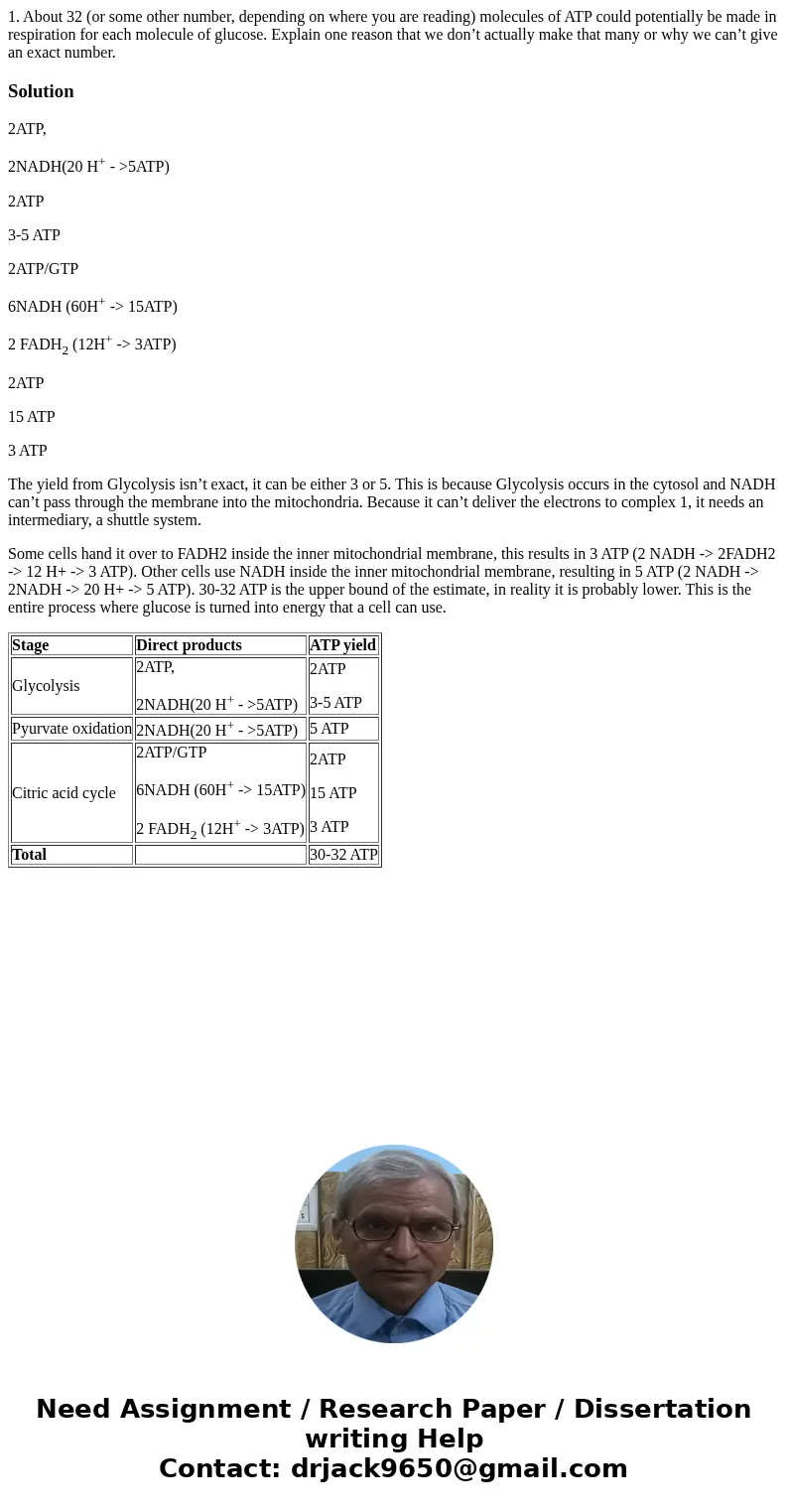1 About 32 or some other number depending on where you are r
1. About 32 (or some other number, depending on where you are reading) molecules of ATP could potentially be made in respiration for each molecule of glucose. Explain one reason that we don’t actually make that many or why we can’t give an exact number.
Solution
2ATP,
2NADH(20 H+ - >5ATP)
2ATP
3-5 ATP
2ATP/GTP
6NADH (60H+ -> 15ATP)
2 FADH2 (12H+ -> 3ATP)
2ATP
15 ATP
3 ATP
The yield from Glycolysis isn’t exact, it can be either 3 or 5. This is because Glycolysis occurs in the cytosol and NADH can’t pass through the membrane into the mitochondria. Because it can’t deliver the electrons to complex 1, it needs an intermediary, a shuttle system.
Some cells hand it over to FADH2 inside the inner mitochondrial membrane, this results in 3 ATP (2 NADH -> 2FADH2 -> 12 H+ -> 3 ATP). Other cells use NADH inside the inner mitochondrial membrane, resulting in 5 ATP (2 NADH -> 2NADH -> 20 H+ -> 5 ATP). 30-32 ATP is the upper bound of the estimate, in reality it is probably lower. This is the entire process where glucose is turned into energy that a cell can use.
| Stage | Direct products | ATP yield |
| Glycolysis | 2ATP, 2NADH(20 H+ - >5ATP) | 2ATP 3-5 ATP |
| Pyurvate oxidation | 2NADH(20 H+ - >5ATP) | 5 ATP |
| Citric acid cycle | 2ATP/GTP 6NADH (60H+ -> 15ATP) 2 FADH2 (12H+ -> 3ATP) | 2ATP 15 ATP 3 ATP |
| Total | 30-32 ATP |

 Homework Sourse
Homework Sourse